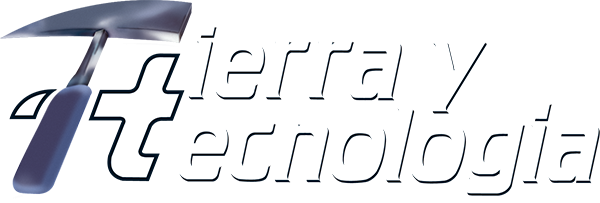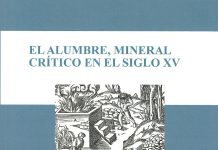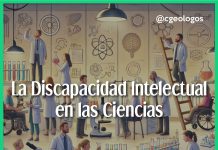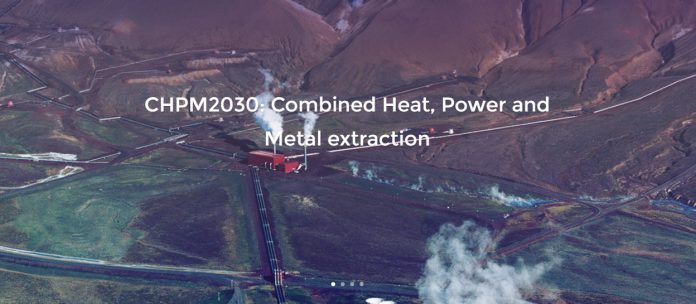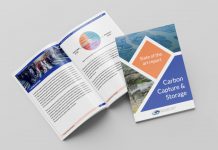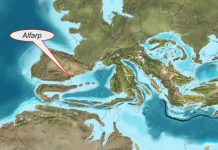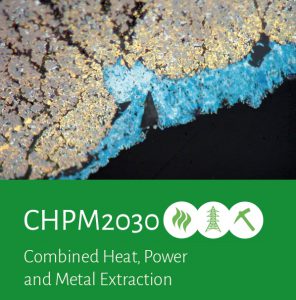 CHPM2030 consiste en el desarrollo de una novedosa y potencial solución tecnológica que puede ayudar a satisfacer las necesidades energéticas y de metales estratégicos europeos, trabajando en las fronteras del desarrollo de los recursos geotérmicos, extracción de minerales y electro-metalúrgicos, el proyecto tiene como objetivo convertir las formaciones metálicas ultraprofundas en yacimientos-EGS que servirá como base para el desarrollo de un nuevo tipo de facilidad para “calor combinado, potencia y extracción metal” (CHPM). En resumen es un estudio combinado de calor, energía y metal en cuerpos mineralizados ultraprofundos.
CHPM2030 consiste en el desarrollo de una novedosa y potencial solución tecnológica que puede ayudar a satisfacer las necesidades energéticas y de metales estratégicos europeos, trabajando en las fronteras del desarrollo de los recursos geotérmicos, extracción de minerales y electro-metalúrgicos, el proyecto tiene como objetivo convertir las formaciones metálicas ultraprofundas en yacimientos-EGS que servirá como base para el desarrollo de un nuevo tipo de facilidad para “calor combinado, potencia y extracción metal” (CHPM). En resumen es un estudio combinado de calor, energía y metal en cuerpos mineralizados ultraprofundos.
Más información sobre el proyecto (PDF)
PRESS RELEASE | BRUSSELS | JUNE 2016 – The recently launched Horizon2020 funded CHPM2030 project aims to develop a novel and potentially disruptive technology solution that can help satisfy the European needs for energy and strategic metals in a single interlinked process.
CHPM2030 is a 42-months project funded by the European Commission’s Horizon2020 programme on Research and Innovation (grant agreement nº 654100) that started on 1 January 2016. The strategic objective of CHPM2030 is to develop a novel and potentially disruptive technological solution that can help satisfy the European needs for energy and strategic metals in a single interlinked process. In the CHPM technology vision the metal-bearing deep geological formation will be manipulated in a way that the co-production of energy and metals will be possible, and may be optimised according to the market demands.
Working at the frontiers of geothermal resources development, minerals extraction and electro-metallurgy the project aims at converting ultra-deep metallic mineral formations into an “orebody-Enhanced Geothermal Systems (EGS)” that will serve as a basis for the development of a new type of facility for “Combined Heat, Power and Metal extraction” (CHPM).
As a final outcome the project will deliver blueprints and detailed specifications of a new type of future facility that is designed and operated from the very beginning as a combined heat, power and metal extraction system. The horizontal aim is to provide new impetus to geothermal development in Europe by investigating previously unexplored pathways at low-Technology Readiness Levels (TRL). This will be achieved by developing a Roadmap in support of the pilot implementation of such system before 2030, and full-scale commercial implementation before 2050.
Led by the University of Miskolc (Hungary) the CHPM2030 project partners represent governments (NERC, LNEG, IGR, SGU), research organisations (ISOR, VITO), academia (UNIM, USZ, KLeuv), SMEs (MinPol, LPRC) and the European geoscientific professional community (EFG). All of these participants are outstanding representatives of their particular sector and will contribute to the success of the project with their unique know-how. The project kick-off meeting took place in Miskolc, Hungary on 28 and 29 January 2016.
In the frame of Work Package 1, a study is currently under preparation, which will provide an EGS relevant review of the metallogenic provinces of Europe. With the tools of ore geology and metallogeny, it will serve as a background for formulating a detailed concept on the application of the CHPM technology.
Sigue a CHPM2030 en:
• Linkedin: https://www.linkedin.com/company/chpm2030
• Twitter: https://twitter.com/chpm2030
• Facebook: https://www.facebook.com/chpm2030
